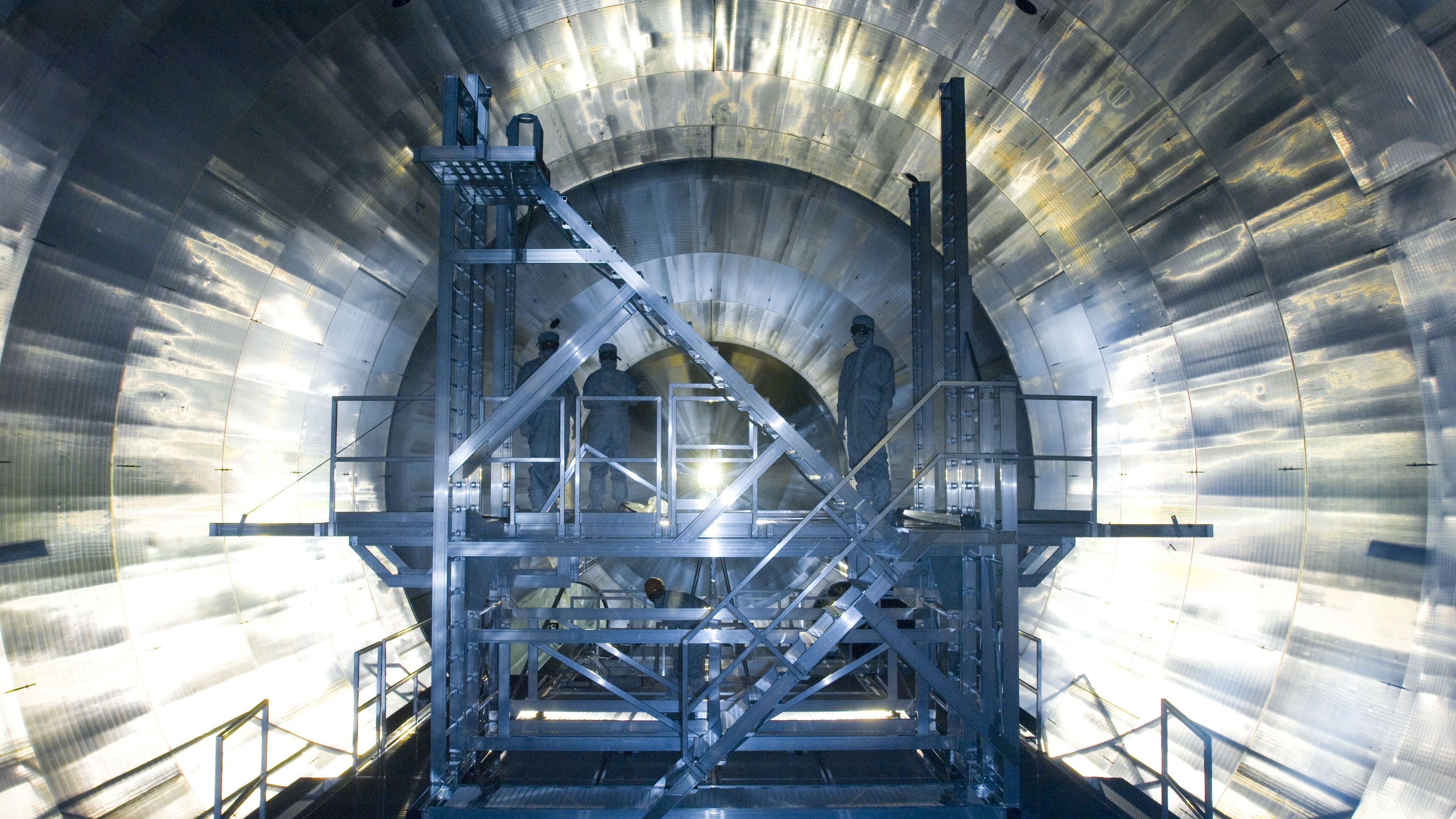
Physicists have scaled down the maximum possible mass of an elusive “ghost particle” called a neutrino to at least one-millionth the weight of an electron. The revision takes scientists one more step toward a discovery that could alter or even upend the Standard Model of particle physics.
Our universe is awash with phantom specks of matter. Every second, around 100 billion neutrinos pass through each square centimeter of your body. They’re produced in multiple places: the nuclear fire of stars, in enormous stellar explosions, by radioactive decay and in particle accelerators and nuclear reactors on Earth.
Even though they’re the most common form of matter in the cosmos, neutrinos’ minimal interactions with other matter types makes them notoriously difficult to detect, and they’re the only particles in the Standard Model whose precise mass remains unaccounted for.
Searching for this mass could have a significant impact on our understanding of the cosmos. Despite ample experimental hints to the contrary, the Standard Model predicts that neutrinos shouldn’t have any mass at all. Finding it, therefore, could poke a hole in the model wide enough for new physics. It may even explain why we exist in the first place.
Related: Most energetic neutrino ever found on Earth detected at the bottom of the Mediterranean Sea
Now, new findings from the Karlsruhe Tritium Neutrino (or KATRIN) experiment in Germany have advanced closer to this goal — setting a ceiling for the ghost particle’s mass at 0.45 electron volts, which reduces the experiment’s previous upper limit by nearly half. The researchers published their results Thursday (April 10) in the journal Science.
Neutrinos come in three different flavor states called electron, muon and tau neutrinos, based on the different particles they interact with. These flavor states are believed to be mixtures of mass states, and the strongest evidence that neutrinos have mass is because, weirdly, they can spontaneously switch between flavors on the fly — a finding that won its discoverers the Nobel Prize in Physics in 2015.
Yet this mass is vanishingly tiny, and physicists don’t really have a solid explanation for why.
To search for an answer, the physicists behind the new research turned to radioactive decays of the unstable hydrogen isotope tritium, which splits into an electron and an electron antineutrino — the electron neutrino’s antimatter counterpart.
Neutrinos, or antineutrinos for that matter, cannot be directly detected, but the energy their mass subtracts from the speed of the accompanying electron can. The KATRIN researchers detected a mind-boggling 36 million of these electrons as the particles arrived at the detector at the other end of the experiment. This enabled the researchers to deduce the maximum electron antineutrino mass.
With this upper limit set, the physicists will continue to collect more data until the end of 2025 to constrain the neutrino mass even further.
Meanwhile, other scientists are searching for the mass using similar tritium decays, by studying other decays of particles called pions and kaons, and even by staring out into space at ancient shockwaves etched out across the early universe. What they find could bring our picture of the universe into sharper focus, or alter it forever.
